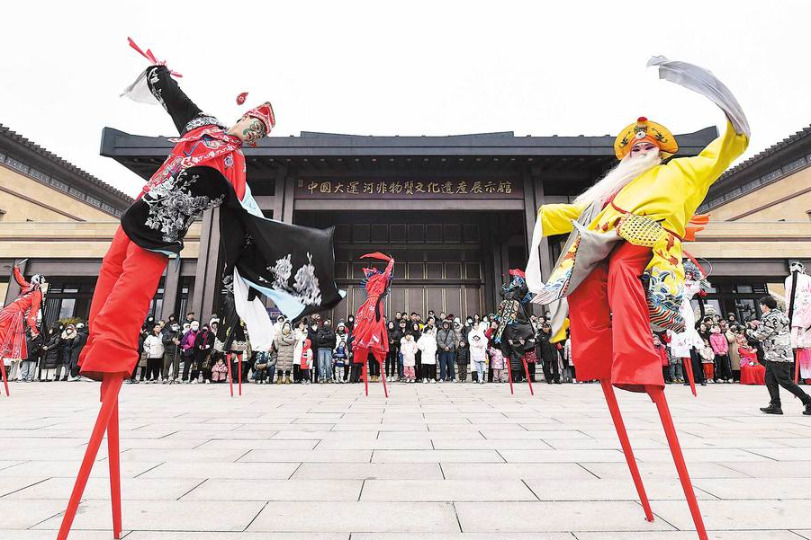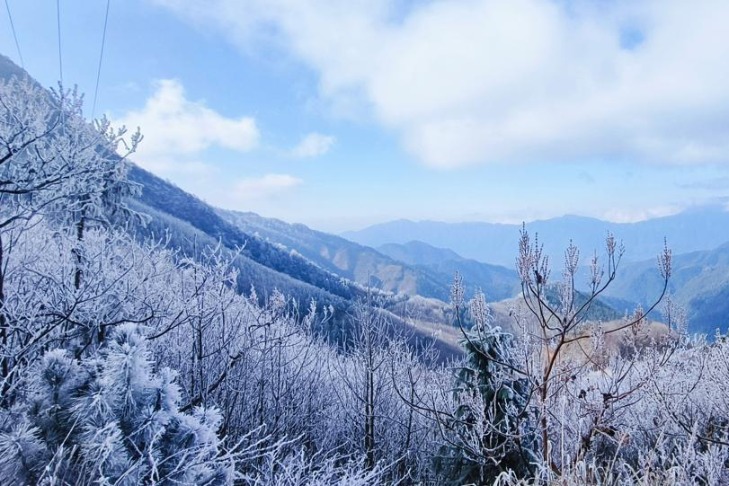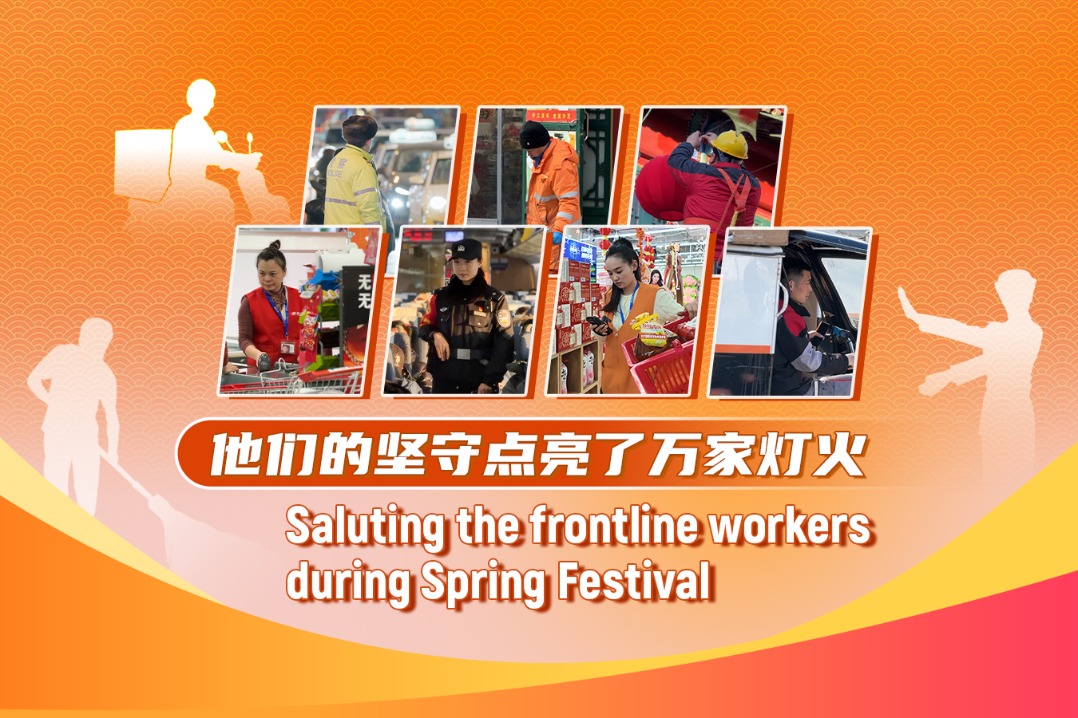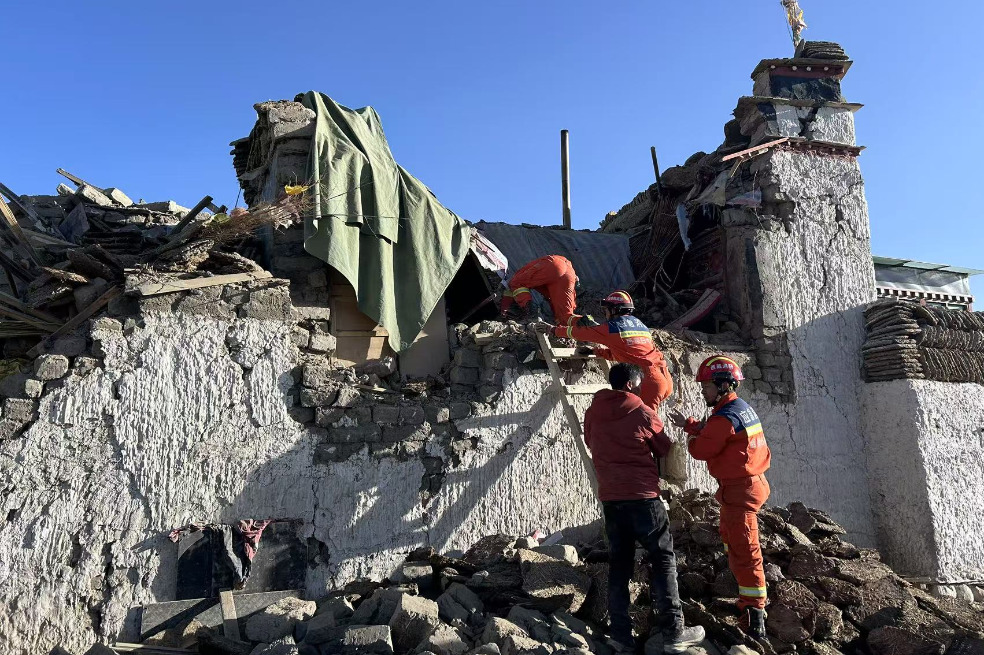Heilongjiang's Harbin makes most of icy conditions

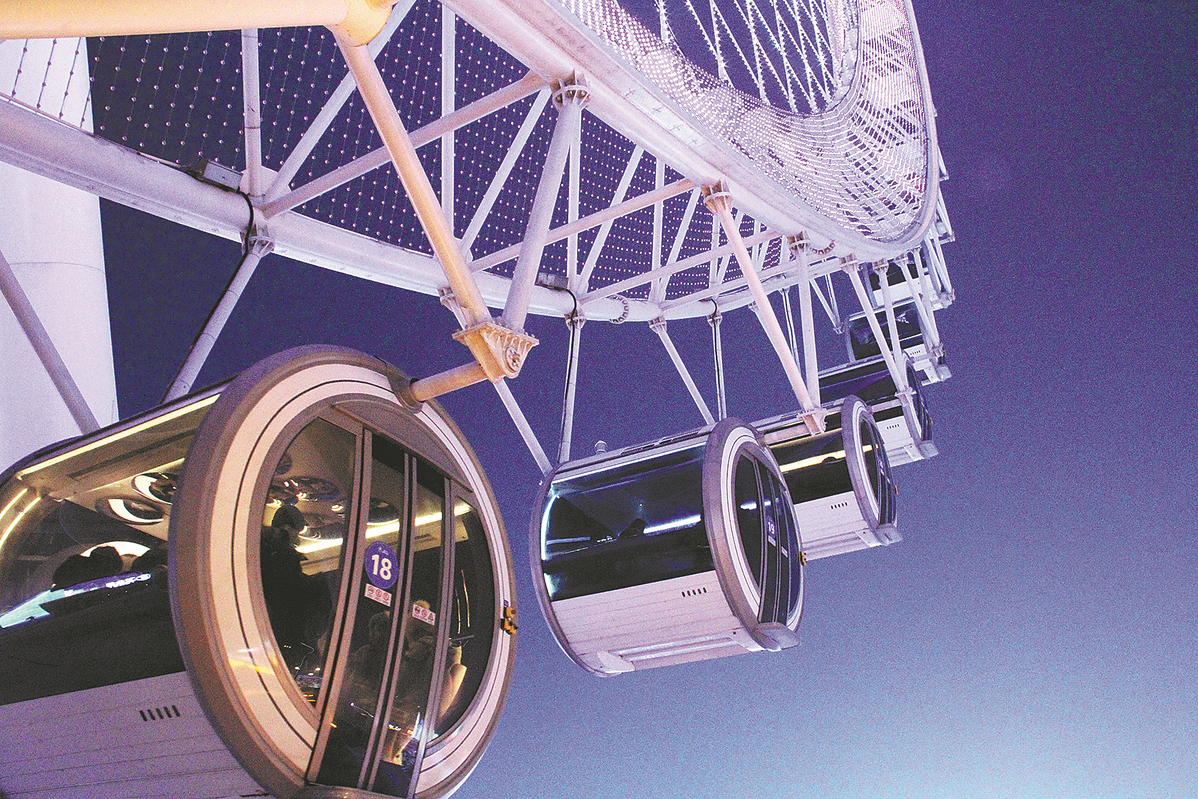
At the famed Harbin Ice and Snow World in Northeast China's Heilongjiang province, a thermometer embedded in a towering ice sculpture has become a popular spot for tourists to visit.
The digits displayed not only reflect the frigid temperatures that make this winter wonderland possible, but also the meteorological services that support the city's ice and snow economy.
Han Jiliang, director of the city's meteorological service center, said the center provides tailored weather services for the icy attraction to ensure the safety and quality of its operation.
Late last year, abnormally warm temperatures delayed the ice harvest, whereby large blocks of ice were cut away from frozen lakes and rivers to supply the ice and snow festival. "By mid-November, temperatures were still above freezing, making it impossible to start the construction of the park," Han said.
The city's meteorological bureau later forecast a temperature drop on Nov 26, indicating a faster increase in ice thickness. Ice harvesting is safe when the thickness reaches 30 centimeters, Han said.
"We pay close attention to consistent temperatures rising above — 10 C, which may result in the gradual melting of ice sculptures," he added.
To provide precise data for the safe operation of the Ferris wheel in the park, the meteorological team installed a mini monitoring device on one of the passenger cars, which goes as high as 120 meters above the ground during their rotation.
If temperatures at that height go below — 40 C or above 40 C, or if wind speeds pose safety threats, the Ferris wheel will be closed, he said.
Xu Zucheng, an official with the Heilongjiang Provincial Department of Culture and Tourism, said the province has ramped up efforts to leverage its unique climate for tourism.
Using geographic information systems and climate data, meteorologists can help plan tourism infrastructure and routes, ensuring safety and comfort for visitors, Xu said.
"Accurate weather forecasts are crucial for managing risks like blizzards or extreme cold, providing references for visitors and tourism companies," Xu noted, adding that scenic spots can adjust operations and protect tourists accordingly.
For tourists like Chen Yue from Anhui province, Harbin's winter charm is irresistible. "We don't get much snow in the south, so coming here feels magical," she said.
She checked weather reports weeks ahead of her journey to the northernmost place she had ever visited.
"The cold wasn't as bad as I expected, and some of my prepared clothes haven't even been taken out," she said during her visit to the city last month.
Jeremy Rattigan, an Australian who used to work in Shanghai and a skiing and snowboarding enthusiast, was pleased with the weather conditions at Harbin's Yabuli Ski Resort on a sunny day last month. "The best weather conditions for skiing are clear and sunny," he said.
Temperatures between — 15 C and — 5 C are suitable for skiing, while wind is not a preferable factor on mountains as it makes the temperature feel much colder than it actually is, he added.
"I think the weather is getting better (compared to previous days). It's all about snow — the more snow, the better," Rattigan said.
- Heilongjiang's Harbin makes most of icy conditions
- Looking to the skies for safety on the slopes
- Ten photos from across China: Jan 31 - Feb 6
- Monitoring of blood glucose revolutionized
- Filipino designer finds culture, creativity at Wuxi's temple fair
- Lightning shows illuminate Shanghai's Jing'an district
















